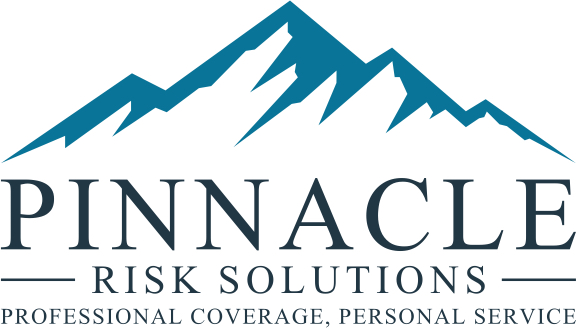
How to save on car insurance for LOW-USE VEHICLES
- Low-mileage drivers often receive reduced premiums, as driving less may decrease the risk of getting into an accident and filing a claim.
- Low-mileage car insurance options — such as usage-based or pay-per-mile — can reduce auto insurance costs if you don’t drive regularly.
- Auto insurance companies typically offer discounts for those who don’t drive often and avoid accidents — such as good driver and low-mileage driver discounts.
- You can reduce your coverage limits, remove unnecessary endorsements or increase your deductible to lower costs.
- Regularly compare quotes from various auto insurance companies to make sure you’re getting the best rate.
There are several car insurance options designed for low-use vehicles — like pay-per-mile or usage-based plans — that can help reduce costs if you don’t drive much. You may also be able to save by qualifying for discounts or by adjusting your coverage levels and deductibles.
Can I Reduce the Price of My Car Insurance if I Drive Less?
Driving less can lead to lower car insurance premiums, as mileage is a key factor in how insurers determine your rates. The more time spent on the road, the higher the risk of accidents. For instance, if you’ve recently transitioned to working from home and no longer have a daily commute, you may qualify for reduced rates.
Insurance providers set premiums based on the likelihood of a claim being filed. Less driving typically means fewer chances for accidents, making low-mileage drivers less risky to insure. As we’ll explore later, there are also alternative insurance options beyond standard policies that may offer additional savings for infrequent drivers.
1. Pay-Per-Mile Car Insurance
Pay-per-mile car insurance provides flexible pricing based on how much you actually drive, rather than a flat rate. These policies usually include a base monthly fee plus a per-mile charge. For example, Nationwide’s pay-per-mile program charges a $60 base rate, plus 7 cents for each mile driven during the month.
Insurance companies typically track mileage through a telematics device that transmits data automatically. However, if a telematics device isn’t used, some insurers may ask you to upload a photo of your odometer instead.
2. Low-Mileage Discounts
Certain insurers offer low-mileage discounts to drivers who stay under a specific annual mileage limit. For instance, American Family customers who drive fewer than 8,000 miles per year could save up to 25% on their premiums. However, this type of discount may only apply at policy renewal, rather than when you first purchase coverage.
3. Usage-Based Car Insurance
Usage-based car insurance (UBI) adjusts your premium based on your driving habits, often using telematics to gather data. These programs track not just mileage, but also factors like speed, braking behavior, and the time of day you drive. Depending on the insurer, this data is collected through a plug-in device or a smartphone app that runs while you’re on the road.
With UBI, premiums are typically recalculated regularly, meaning your rates can change from month to month based on how—and how much—you drive. While these programs can lead to savings, the amount varies by insurer.
4. Reducing Your Coverage
If you drive infrequently, high coverage limits may be more than you need, offering limited value for the added cost. Depending on your state’s minimum requirements and your current policy, reducing your coverage limits could help lower your premium.
Lower limits mean the insurer assumes less financial risk, which can translate into cost savings. However, this also increases your potential out-of-pocket costs—especially if you're involved in a costly accident, regardless of how rarely you drive.
You can also reduce your premium by dropping unnecessary policy add-ons and sticking to the minimum coverage required by your state. For instance, if you own your vehicle outright, you might consider removing optional coverages like collision, comprehensive, or roadside assistance. Just remember, eliminating these protections means you’ll be responsible for any related expenses if an incident occurs.
5. Choosing a Higher Deductible (When Appropriate)
Raising your deductible—the amount you pay out of pocket before insurance kicks in—can be an effective way to lower your auto insurance premium. Since a higher deductible shifts more financial responsibility to you, insurers often reward this with reduced rates. Just make sure you can afford the deductible amount in case you need to file a claim.
Keep in mind that you’ll typically need to pay your deductible for each claim you file. For instance, if you’re involved in multiple accidents in one month, you’ll have to submit a separate claim and pay a deductible for each incident. Also, if your claim amount is less than your deductible, you’ll likely have to cover the full cost out of pocket.
6. Maintaining a Clean Driving Record
Keeping a clean driving record, free from traffic violations, accidents, and other negative marks on your motor vehicle report (MVR), can lead to lower insurance premiums through various discounts. Many insurers offer good driver discounts for those who maintain a spotless record for a set period, which can vary by company. For instance, Travelers provides a safe driver discount to policyholders with a clean driving history for three to five years.
7. Comparing Quotes
Working with Pinnacle Risk Solutions can help you find better rates. Aim to get quotes from three to five different insurers to compare options. You’ll typically need to provide details about your car usage, such as mileage, driving history, and vehicle type, along with personal information like your age, marital status, and gender.
Reach out to today for a comprehensive & competitive quote from Pinnacle Risk Solutions!
